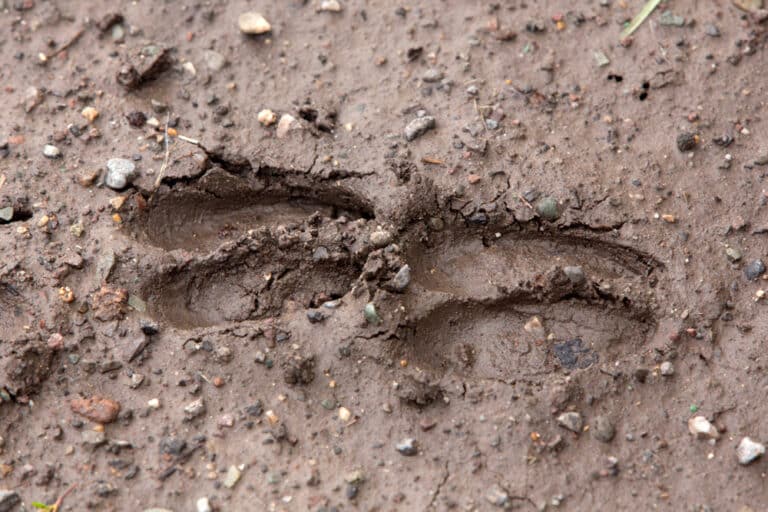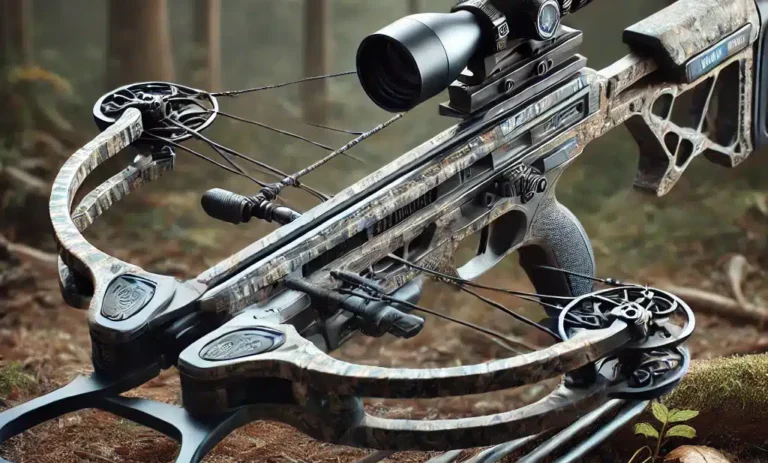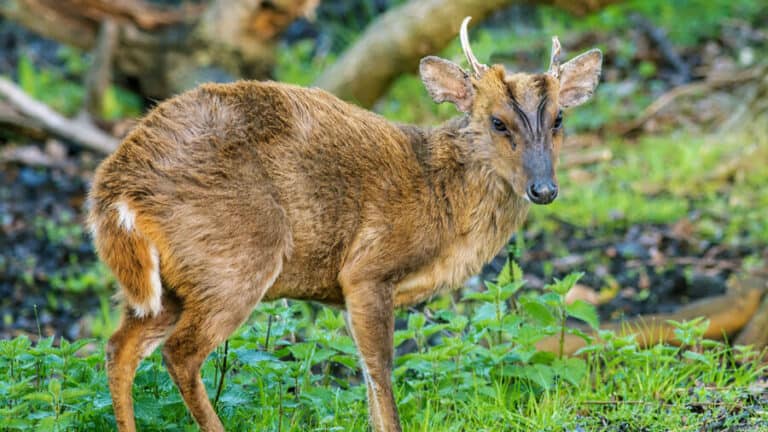Fawns, commonly known as baby deer, can be a mysterious and captivating subject to explore; here, we will uncover their remarkable traits and examine the life cycle of these animals. These young creatures possess extraordinary attributes that are captivating and vital to their endurance.
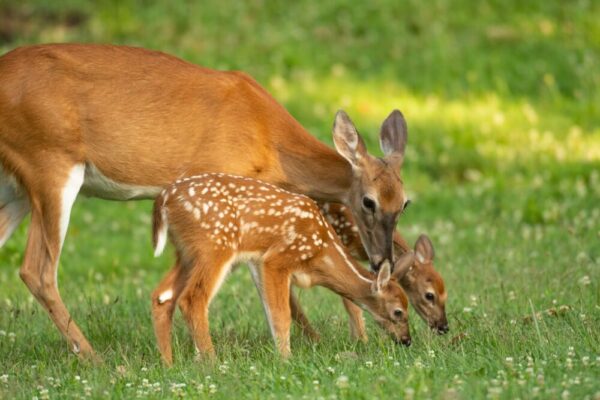
The realm of infant deer, or fawns, is captivating. These little cuties are born with some cool features that help them survive. One of their tricks is their soft, spotted coat, which helps them hide from hungry predators.
The Distinctive Features of a Newborn Deer Fawn
A newborn deer fawn’s most noticeable feature is its spots. These white spots on a reddish-brown background help them blend in with the forest and stay safe from danger. Check out this National Geographic article about White-Tailed Deer for more info.
Another interesting thing about baby deer fawns is their long legs. They’re almost as long as an adult deer’s legs. These strong limbs allow them to stand up and follow their mom right after birth. Talk about being born-ready.
Understanding the Life Cycle and Growth of Baby Deer
Fawns grow super fast in their early stages. They start drinking their mom’s milk but eventually switch to solid food. They’re weaned off milk by around ten weeks old.
During this transition, baby deer become more independent from their mom while staying close enough for protection. They say, “I’m a big deer now, but I still need you, Mom.
Did you know there’s a tiny deer called the pudu? It’s found in South America and is about the size of a rabbit. These little guys can navigate through dense rainforests and avoid more giant predators. Learn more about these adorable creatures in World Atlas’ small and large deer guide.
Threats to Baby Deer Survival
The world of baby deer, or fawns, is full of challenges and dangers. Although they may be born with survival skills, humans and their activities pose significant risks to these adorable creatures.
Impact of Agricultural Practices on Fawn Habitats
Agriculture can be a real buzzkill for fawns. When humans clear large land areas for farming, it messes up the fawns’ homes. Less forest means more exposure to predators and fewer food options. It’s like a lousy buffet for these little guys.
Studies show that agriculture physically displaces wildlife and messes with their behavior. It’s like a bad hair day for wild animals trying to find food, mate, and avoid becoming someone’s dinner.
How Logging Contributes To Habitat Loss
Logging is another party pooper for fawns. Forests are like their playgrounds, with plenty of food and hiding spots. But when humans start cutting down trees, it’s like taking away their toys.
- Selective Logging: Even when only some trees are cut down, selective logging disturbs the forest’s balance. It’s like removing a few puzzle pieces and making the picture incomplete.
- Clearcutting: Clearcutting is like throwing a grenade into the forest. It destroys everything, leaving no place for fawns to call home.
There’s a direct link between logging and declining populations of various wildlife species, including deer. To keep these cuties around, we must be more thoughtful about our agricultural practices and promote sustainable forestry. Let’s be good stewards of our planet and protect the homes of all its wild inhabitants.
Early Life Stages & Developmental Milestones in Baby Deer
The early life of a fawn is filled with rapid growth and development. Newborn fawns come into the world after a gestation period of around 200 days, prepared to explore their environment.
Transitioning diet – From milkaholic to veggie lover
A newborn fawn starts its life chugging on its mother’s milk. Eventually, the time comes for the fawn to move on from milk. Within two months, they start munching on plants like a true herbivore.
This transition is a slow dance as the doe introduces her fawn to various greens. Most fawns have said goodbye to milk by autumn and embraced the veggie life.
Camouflage – Hide and seek champions.
Fawns are born with a stylish spotted coat that helps them blend into their surroundings. It’s like they’re wearing nature’s camouflage couture.
But it’s not just about looking good. Fawns also know how to freeze like a statue when danger lurks. It’s their way of saying, “You can’t see me.”
Maturity & Independence
Fawns grow faster than a speeding bullet. By fall, they’ve tripled their birth weight. They become independent and can roam freely without their mom holding their hooves.
Remember to respect their space and let nature do its thing. We’re just here to appreciate their beauty from a distance.
Fawns, commonly called baby deer, are an intriguing species that requires careful consideration when interacting with them. Their survival in the wild depends on their natural behavior patterns, so let’s not mess with that.
Avoidance policy – Why shouldn’t we interfere with baby deer?
Approaching a cute fawn might seem tempting, but it can stress them out and waste their energy. Plus, our human scent might attract predators. So, hands off the baby deer.
The right way professionals handle interactions when required
If there’s a real need to interact with a fawn, leave it to the pros. Trained wildlife experts know how to handle these situations without causing harm or distress.
- Disease transmission: Touching wild animals can spread diseases. Let’s keep our germs to ourselves.
- Natural behaviors: Feeding wild animals messes up their diet. They need their natural food, not our leftovers.
- Predator attraction: Regularly providing food can invite unwanted guests. Let’s not turn our neighborhoods into a predator buffet.
Remember, admire these beautiful creatures from a distance. Only interfere when necessary and with professional guidance. Let’s preserve nature’s wonders for future generations.
Parenting Style vs. Humans
The parenting style of a doe and her fawn is fascinating. Unlike people, deer possess distinct techniques to guarantee the safety of their young nature.
A doe allows her fawn to nurse and then leaves it alone within earshot range. This tactic enables quick response if danger arises. It’s a successful approach thanks to centuries of evolved adaptations.
Fawns’ Survival Tactics
Fawns emit almost no odor, making them hard for predators to detect. When frightened, they freeze and remain motionless until they think they have been discovered, bound away for safety. These tactics significantly increase their chances of survival against natural adversaries.
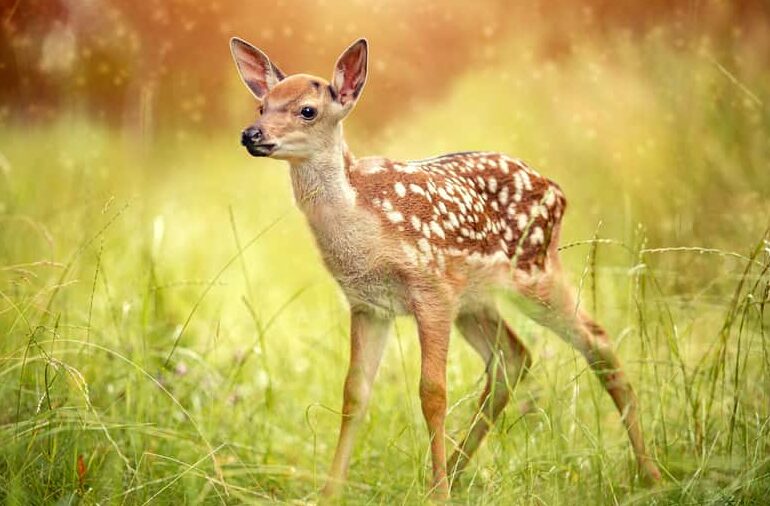
Dangers Of Human Interference with Baby Deer
Encountering a baby deer can be exciting, but caution must be exercised. Human interference can harm these delicate creatures and disrupt their natural behaviors and habitats. Never feed or place a collar on any wild creature; it can encourage disease transmission and unwanted human interactions.
Chronic Wasting Disease (CWD)
CWD is highly contagious among deer species and poses significant threats to individual animals and entire populations. It spreads through direct contact between animals or indirectly through contaminated environments. Avoid feeding wildlife, especially in areas where the disease is present.
Nurturing Beautiful Creatures And Ecosystems
- Habitat restoration: Preserve existing habitats and create new ones suitable for various life cycle stages. Protect birthing sites and ensure the availability of food and water resources necessary for growth and development.
- Predator control: Manage predator populations to prevent over-predation and maintain ecosystem balance.
- Research and monitoring: Conduct regular surveys and studies to understand better health and well-being dynamics, including climate change and infectious diseases.
- Rehabilitation and release programs: Rescue injured or sick animals and release them back into the wild after recovery under the supervision of trained professionals following strict guidelines to minimize stress and disturbance.
Remember to respect the distance and let nature take its course. It’s our responsibility to appreciate the beauty from a distance and ensure the well-being of these magnificent animals and the ecosystems they inhabit.
FAQs
What are the facts about baby deer?
Baby deer, known as fawns, have unique characteristics, like being odorless and having spotted coats for camouflage. They stay motionless when threatened and transition from mother’s milk to solid food within a few months. For more detailed information, check out this National Geographic article.
What to do about baby deer?
If you encounter a fawn alone, it’s best not to disturb them as their mothers are likely nearby but hidden for safety reasons. Feeding or touching can cause harm, so maintain distance and let nature take its course.
How long are deer pregnant? Or How long is a deer pregnant?
A deer’s pregnancy, also known as gestation, varies depending on the species of deer. Here are the approximate gestation periods for different types of deer:
White-tailed Deer: White-tailed deer, one of the most common deer species in North America, have a gestation period of about 200 to 205 days. Fawns are typically born in late spring or early summer.
Mule Deer: Mule deer, another prominent deer species in North America, has a slightly longer gestation period than white-tailed deer, approximately 200 to 210 days.
Elk: Elk, also known as wapiti, have a longer gestation period than deer species. The gestation period for elk is around 240 to 262 days. Calves are usually born in late spring.
Red Deer: Red deer, native to Europe and also found in other parts of the world, have a gestation period similar to elk, ranging from 230 to 240 days.
Roe Deer: Roe deer in Europe and Asia have a shorter gestation period than larger deer species. Their gestation period is about ten months or approximately 280 days.
It’s important to note that these approximate gestation periods can vary based on nutrition, environmental conditions, and individual variation. Fawns or calves are typically born when food is more abundant, and favorable weather conditions give young deer a better chance of survival.
When is deer mating season? Or When is mating season for deer?
Deer mating season, also known as the rut, varies depending on the species of deer and the geographic region in which they live. The timing of the rut can be influenced by factors such as the availability of food, climate, and photoperiod (daylight hours). Here are some general guidelines for the mating seasons of different deer species:
White-tailed Deer: The rut for white-tailed deer typically occurs in the fall, usually from October to December. Peak rut activity varies by location, with northern regions experiencing it earlier and southern regions later.
Mule Deer: Mule deer rut timing is similar to white-tailed deer, generally occurring in the fall. The mule deer rut often starts a bit later, around November, and can extend into December.
Elk: Elk rutting season, also known as the “elk rut,” occurs in the fall. Depending on the region and subspecies, elk mating season can range from September to November.
Red Deer: Red deer rutting season typically occurs in the fall, starting around September and extending into October. This period is characterized by male red deer, known as stags, engaging in vocalizations and competitive behaviors to attract females.
Roe Deer: The roe deer rut is unique in that it occurs during late summer and early fall. Roe deer mating season often takes place from July to August.
The rut is a crucial time for deer, as it’s when males compete for the attention of females and mating occurs. During this period, male deer use vocalizations, physical displays, and scent markings to establish dominance and attract mates. Female deer, known as does, become receptive to mating during their respective species’ rutting seasons.
Remember that rut timing can vary based on local conditions and specific subspecies. Additionally, observing the behaviors of deer in your area can provide clues about when the rut is occurring.
When do deer have babies?
Deer give birth to their young, known as fawns, during specific times of the year, typically in alignment with food availability and favorable weather conditions. The timing of deer having babies can vary based on the species of deer and the geographic region in which they live. Here are some general guidelines for the birthing seasons of different deer species:
White-tailed Deer: White-tailed deer fawns are typically born in late spring to early summer. Depending on the region, the birthing season can start as early as May and extend into June or July.
Mule Deer: Mule deer fawns are also born in late spring to early summer, following a similar pattern to white-tailed deer. The birthing season for mule deer can range from May to June.
Elk: Elk calves are born during late spring and early summer, often around May or June. This timing allows the young elk to enjoy abundant vegetation and mild weather.
Red Deer: Red deer calves, known as calves or calves, are typically born in late spring to early summer, usually from May to June.
Roe Deer: Roe deer kids, as they are known, are born during late spring. The birthing season for roe deer usually occurs in June.
The specific timing of deer having babies can be influenced by local environmental factors, such as food availability, climate, and the rut (mating season). Deer give birth to their young after gestation, which varies by species. Once born, fawns or calves are cared for by their mothers, who provide them with milk and protection during their early stages of life.
When is the rutting season for deer?
Deer mating season, also known as the rut, varies depending on the species of deer and the geographic region in which they live. The timing of the rut can be influenced by factors such as the availability of food, climate, and photoperiod (daylight hours). Here are some general guidelines for the mating seasons of different deer species:
- White-tailed Deer: The rut for white-tailed deer typically occurs in the fall, usually from October to December. Peak rut activity varies by location, with northern regions experiencing it earlier and southern regions later.
- Mule Deer: Mule deer rut timing is similar to white-tailed deer, generally occurring in the fall. The mule deer rut often starts a bit later, around November, and can extend into December.
- Elk: Elk rutting season, also known as the “elk rut,” occurs in the fall. Depending on the region and subspecies, elk mating season can range from September to November.
- Red Deer: Red deer rutting season typically occurs in the fall, starting around September and extending into October. This period is characterized by male red deer, known as stags, engaging in vocalizations and competitive behaviors to attract females.
- Roe Deer: The roe deer rut is unique in that it occurs during late summer and early fall. Roe deer mating season often takes place from July to August.
The rut is a crucial time for deer, as it’s when males compete for the attention of females and mating occurs. During this period, male deer use vocalizations, physical displays, and scent markings to establish dominance and attract mates. Female deer, known as does, become receptive to mating during their respective species’ rutting seasons.
Remember that rut timing can vary based on local conditions and specific subspecies. Additionally, observing the behaviors of deer in your area can provide clues about when the rut is occurring.
Conclusion – Baby Deer
Understanding baby deer is crucial for hunters because, let’s face it, they’re pretty unique creatures. With all the agricultural practices and habitat loss, hunters need to recognize how it affects fawn survival and do their part for conservation. And hey, let’s not forget about the avoidance policy and letting the professionals step in when needed because we all want those baby deer to be safe and sound.




